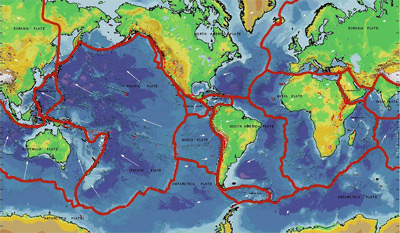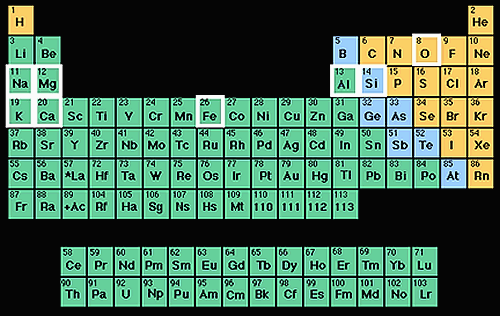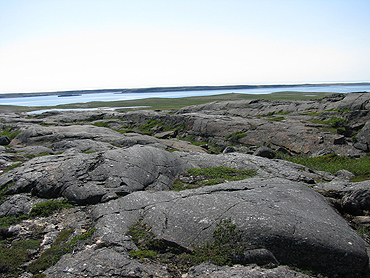The oldest known rock on Earth is found along the northeast coast of Hudson Bay, Canada.
Click on image for full size
Courtesy of Jonathan O'Neil
Scientists Discover the Oldest Known Rock on Earth
News story originally written on September 26, 2008
Earth is more than four and a half billion years old. But there are very few things around from the Earth’s early days. That’s because our planet is a great recycler. Most of the rocks that were formed when Earth was young have been mashed, melted, or eroded into sand as plate tectonic forces move them around. So pieces of rock from the Earth’s early crust are not easy to find.
But recently, scientists found rocks from Canada that are 250 million years older than any other known rocks. The scientists studied the chemistry of the rocks to find out how old they are. Some of the rock samples were as young as 3.8 billion years old. Others were as much as 4.28 billion years old. These oldest rocks may have formed from ancient volcanoes.
These rocks come from an area on the eastern shore of Hudson Bay in northern Quebec called the Nuvvuagittuq greenstone belt. Scientists have known for several years that the rocks in this area were very old. Now we know how old!
Last modified September 26, 2008 by Lisa Gardiner.
You might also be interested in:

Many forces change the surface of the Earth over time. The largest force that changes our planet's surface is movement of Earth's outer layer in a process called plate tectonics. As shown in this picture,
...more
What’s the Earth made of? Most of the Earth’s outer layer, the crust, is made up of eight types of elements. Oxygen (O) Silicon (Si) Aluminum (Al) Iron (Fe) Calcium (Ca) Sodium (Na) Potassium (K) Magnesium
...more
Scientists have learned that Mount Hood, Oregon's tallest mountain, has erupted in the past due to the mixing of two different types of magma. Adam Kent, a geologist at Oregon State University, says this
...more
The Earth's mantle is a rocky, solid shell that is between the Earth's crust and the outer core. The mantle is made up of many different reservoirs that have different chemical compositions. Scientists
...more
Some faults look strong and like they wouldn’t cause an earthquake. But it turns out that they can slip and slide like weak faults causing earthquakes. Scientists have been looking at one of these faults
...more
The sun goes through cycles that last approximately 11 years. These solar cycle include phases with more magnetic activity, sunspots, and solar flares. They also include phases with less activity. The
...more
Studying tree rings doesn't only tell us the age of that tree. Tree rings also show what climate was like while the tree was alive. This means that tree rings can tell us about climates of the past. Two
...more















